Chibi. The word probably brings a very specific image to your mind. Cute characters with big heads, small bodies, and wide eyes.
But there's more to chibi than just cuteness. There's a lot of offensive stuff mixed in there as well. It's a Japanese word with ancient origins and many meanings, most of which you shouldn’t use in polite company.
- What Does Chibi Mean?
- Chibi Etymology
- Chibi in Anime and Manga
- Calling People Chibi
- How to Use Chibi
- How to Draw Chibi
What Does Chibi Mean?
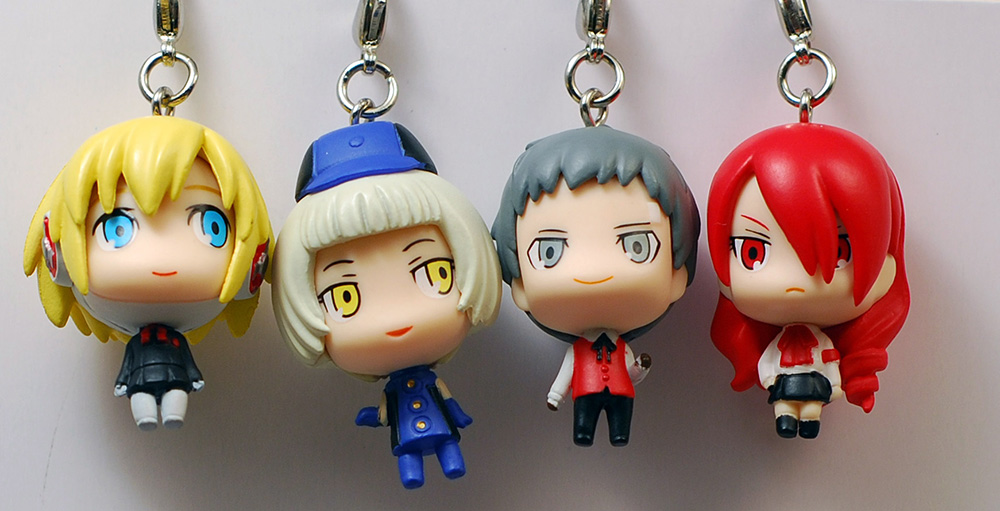
Chibi is Japanese slang for "small" or "short." It’s usually applied to objects, animals, or people (ie. a short person or a small child).
When chibi is used in manga and anime, it tends to have a positive, kawaii connotation. But in real, human conversation it may not. In fact, most of the time, calling someone chibi is going to hurt their feelings. But it can be used to show affection, if you know what to say and how to say it.
Think of it this way: if you go up to someone who is shorter than average and say "Hey, Shorty," or "Hey Small Fry," how do you think they'll react? It's likely they'll get a little angry (if only quietly on the inside, waiting to strike). But maybe not. Depending on your relationship to the person, it could be a sign of affection. Like calling your child "munchkin." A tough call in your native language. Even tougher in a second.
We'll go over the nuances of using chibi in Japanese (nicely and not so nicely). But first, a little history.
Chibi Etymology

Chibi has its roots in kobun, or classical Japanese. The kobun noun tsubi 粒, which means "tiny, rounded thing," eventually evolved into the verb tsubu 禿ぶ, which describes something becoming worn down or sharp edges getting rounded out.
A good example would be a calligraphy brush losing its hairs (because that’s what they used to write back in the days of classical Japanese).
The reading of tsubu eventually changed to chibiru 禿びる, and suddenly we’re not too far from chibi.
Some examples of chibiru in action are:
- 下駄が 禿びてきた。
- My geta1 sandals are getting worn down.
- 禿びた 鉛筆しかないよ。
- I only have pencils that are worn-out.
Eventually the word chibiru got worn out and gave way to the adjective chibi ちび, a smaller version of itself. Chibi is the chibi version of chibiru. How meta!
Chibi is usually written in hiragana or katakana, as in the word chibi-geta ちび 下駄 (worn-out geta), or chibi-enpitsu チビ 鉛筆 (stubby pencil).
Though chibi has kanji (禿び), I’ve never seen it written that way. Probably because it uses the same kanji as hage 禿, which means "bald." It’s easy to see the connection when you consider chibiru was used for describing a brush losing its hairs.
Scholars haven’t yet found the exact years these words spun off from each other. The earliest use of chibi comes from the Taiheiki 太平記, a Japanese historical epic written by Kojima Houshi in the 1370s. A sentence in it reads:
- 歯禿て、 僅かに 残れる 杉の 屐あり
- There is a pair of geta with worn out supports.
So chibi is at least as old as the Taiheiki, which is pretty dang old.
Also old but not as old as the Taiheiki are Kachou Fugetsu 花鳥風月 (The Beauties of Nature) published in 1457 and Nichipo Jisho 日ポ 辞書 (Japanese-Portuguese dictionary) published in 1603. Both use the word chibifude 禿び 筆, which is that worn out calligraphy brush I keep bringing up.
Mentions of a new evolution came in 1753. The Japanese onomatopoeia chibi-chibi ちびちび first appears in Imayo Tsuji Dangi 当風辻談義 written by Joukanboukoua. A second onomatopoeia, chibiri-chibiri ちびりちびり appeared in the story Shodou Kikimimi Sekenzaru 諸道聴耳世間猿 in 1766.
These words means "a little bit" or "little by little." For example, you’re cheap so you only spend a little. Or you don’t want to get drunk, so you drink your beer little by little.
- お 酒をちびちび 飲んだ。
- I drank alcohol a little by little.
- お 酒をちびりちびりと 飲んだ。
- I drank alcohol a little by little.
For hundreds of years, chibi was only used with nouns, like in the word chibifude. But in the Meiji period (1868-1912), people began using the word by itself. Chibi finally won its independence from compound words!
During World War II, chibi’s meaning became simply "small and short." It described small or short people and animals. And finally, we have the full chibi meaning we know today. An adjective used to show affection or belittle someone we think is short.
Chibi in Anime and Manga
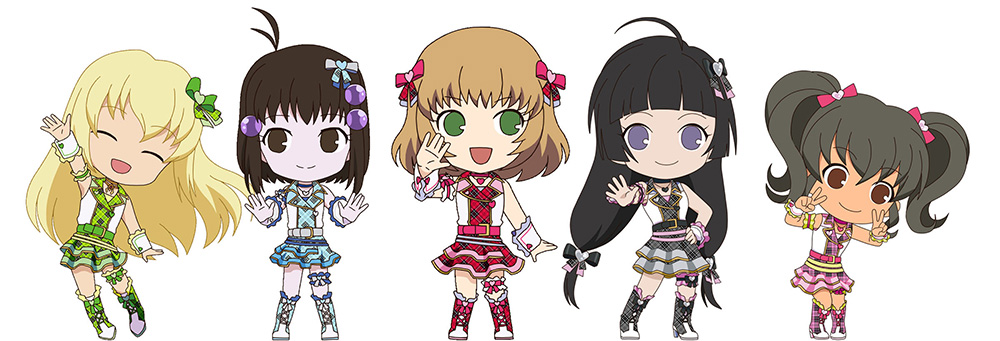
Though chibi describes small things in general, it calls to mind a very specific image for anime and manga fans. Characters with big heads and small bodies make up a subset of illustration known as "Super Deformed" (SD) or "chibi." In Japanese these characters may also be called chibi kyara チビキャラ or mini kyara ミニキャラ .
Chibi or Super Deformed characters are mostly used for portraying childlike versions of popular characters, or playing out humorous scenes.
According to Gen Sato, veteran Japanese animator and author of How To Draw MANGA - Super-Deformed Characters, a chibi character should have a head to body ratio between 1:1 and 4:1. So the head doesn’t necessarily have to be bigger than the body, but it can be considerably larger. Also, facial features are usually exaggerated and gathered toward the center of the face.
But how did the super deformed character come to be? Who made these standards and got the ball rolling? The answer begins and ends with otaku fandom.
Creation of Chibi
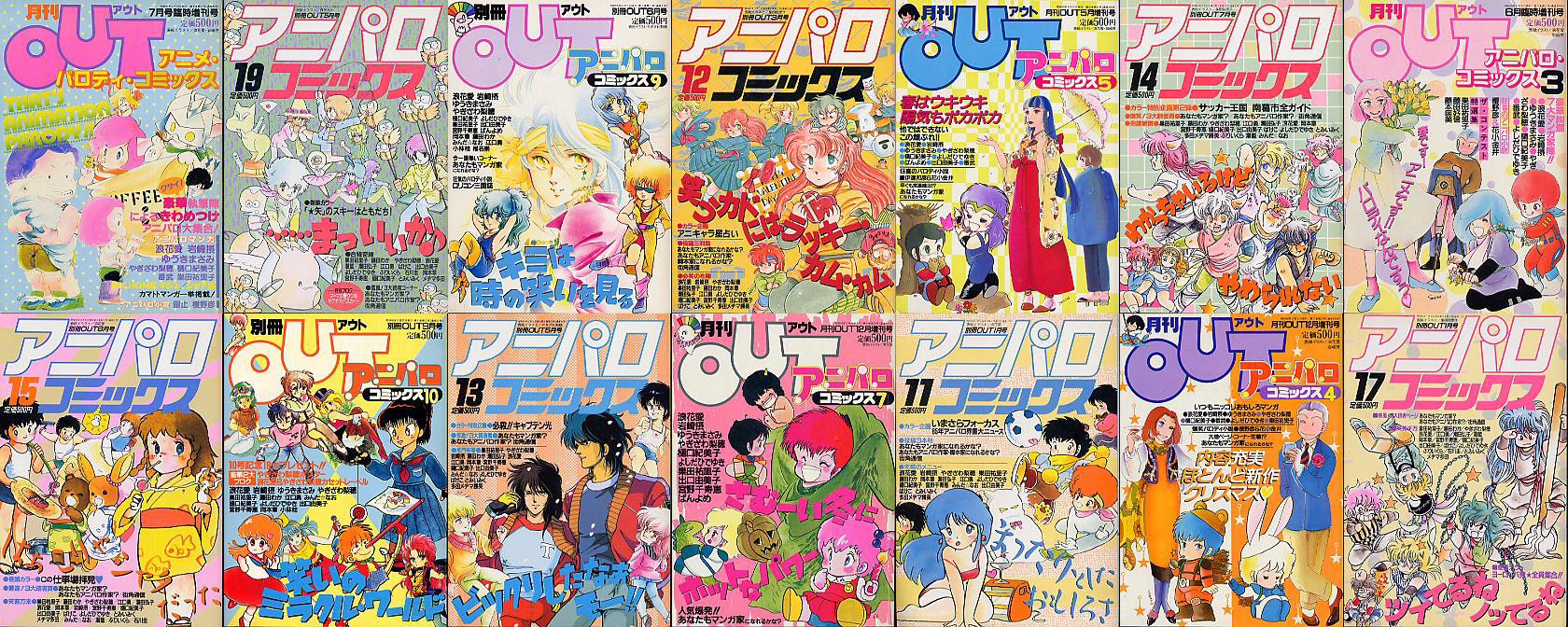
The late 70s and early 80s saw a huge spike in popularity for science fiction in Japan. Landmark anime like Space Battleship Yamato, Galaxy Express 999, and Mobile Suit Gundam changed the way people looked at Japanese sci-fi and animation from that point on.
Naturally, fandom around these series grew. And with fandom came fan art, most notably chibi. Anime fan magazines began featuring short, cute versions of popular characters. One magazine called 月刊OUT (Monthly OUT) published a lot of chibi parody manga of Space Battleship Yamato. This began slowly popularizing the style among fans of anime and manga.
The First Chibi Toy

Remember Gen Sato, who I mentioned earlier? In 1982, he was working on a sci-fi OVA called Crusher Joe. The story follows a group of rough and tumble space mercenaries, one of which is named Alfin. Sato claims he wasn’t very good at his job and was worried about getting fired. So every time his bosses ordered him to redo a scene, he would draw a 4-panel gag manga called Ganbare Alfin-chan がんばれアルフィンちゃん (Hang in there, Alfin!) to make his superiors happy. In these unofficial fan comics, Alfin and the rest of the Crusher Joe cast were drawn chibi.
To Sato’s surprise, his bosses loved his Alfin comics so much, they sent copies to manga magazine publishers. His Alfin-chan fan drawing was first printed in Animage magazine in October 1982. Manga of chibi Alfin was printed the next year in 月間OUT magazine.
Soon after, a major toy manufacturer called Kaiyodo wanted to make an Alfin-chan figure. And so, the first chibi figure was created.
Sato went on to help create other super deformed figures such as Takara Tomy’s Choro-Q Robo line of cute, transforming robot vehicles.
Chibi Goes Mainstream with SD Gundam
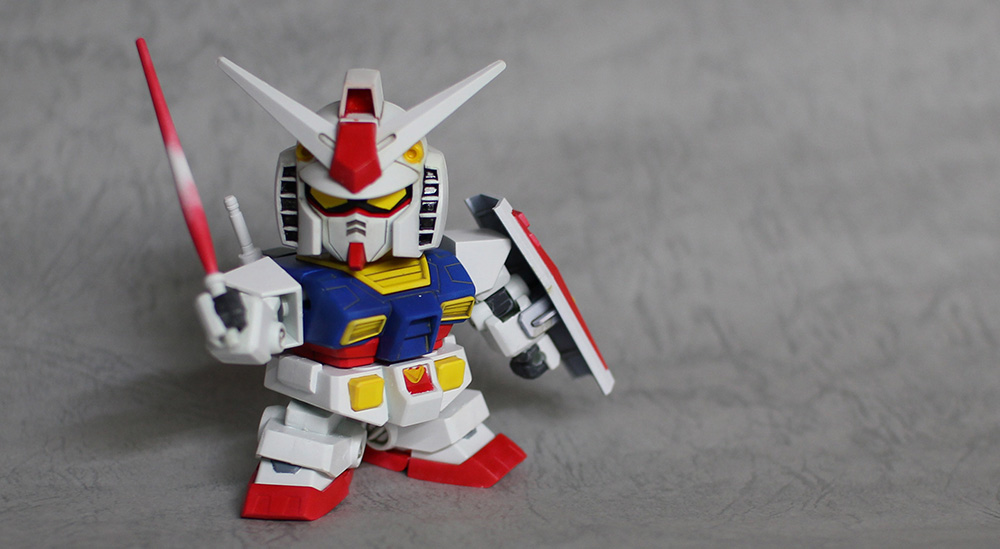
As the 80s wore on, popularity shifted away from science fiction toward comedy and fantasy. This wasn’t great for toy companies who were quite comfortable making robots and vehicles. Thankfully, a saving grace came to BANDAI from a young student named Koji Yokoi.
Yokoi was sending fan art to the official BANDAI Gundam fan magazine Mokei Jouhou 模型情報. His Gundams were different though. They were chibi. Yokoi based his designs on the mini-Godzilla and mini-Ultraman that Akira Toriyama drew in Dr. Slump. The editors of the magazine liked his illustrations so much, they gave Yokoi’s Gundams their own recurring manga in the magazine.
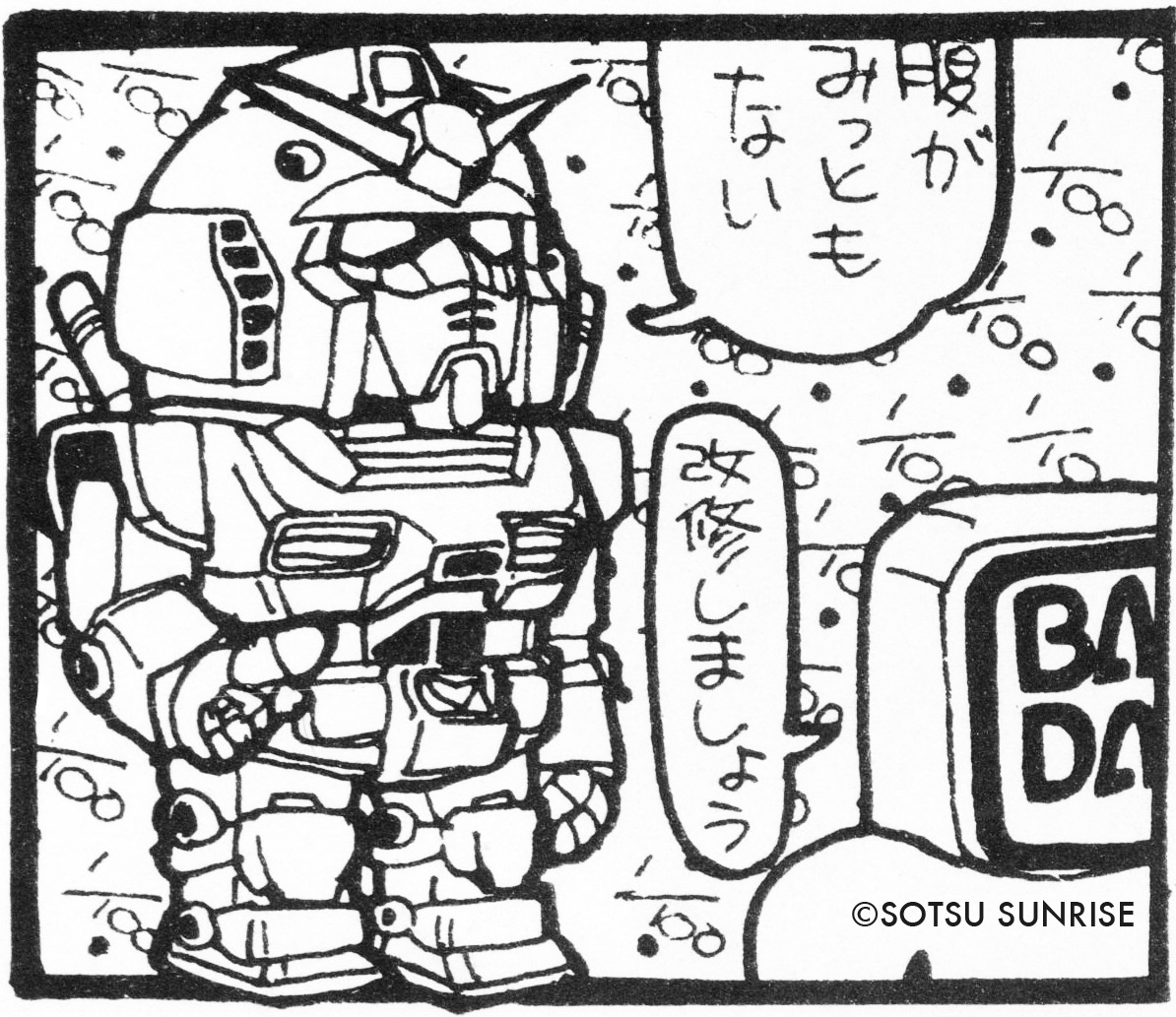
The tiny Gundams caught the attention of BANDAI's toy department in 1984, and Yokoi was invited to design chibi Gundam capsule toys in a series called SD Gundam World. Not everyone at BANDAI was on board for this project though. It was a house divided.
Initial resistance came from a feeling that this new "cute Gundam" compromised the integrity of the franchise. Gundam was famous for pioneering the "real robot" genre of anime (so real that today the Japanese government is working on a real Gundam). Deep storylines and complex military history were all part of the Gundam legacy. The new SD Gundams felt heretical.
But after a lot of in-fighting and missteps, enthusiasm for SD Gundam won out. In 1985, the SD Gundam World line of gashapon toys launched. Of course, it was a big hit and popularized the chibi concept beyond the otaku realm.
Before this, the term "Super Deformed" or "SD" didn’t exist. There were several disparate terms for the illustration style, but no solid terminology. But with the creation of SD Gundam, the term Super Deformed was introduced to the Japanese lexicon. The term "chibi-kyara" or chibi character followed soon after.
Today, almost anything can be super deformed. From chibi One Piece to chibi Dragon Ball, nearly every character has an SD version, either officially produced or made by fans. Seemingly, the chibi concept has no limits. That is, until you bring it into everyday conversation.
Calling People Chibi
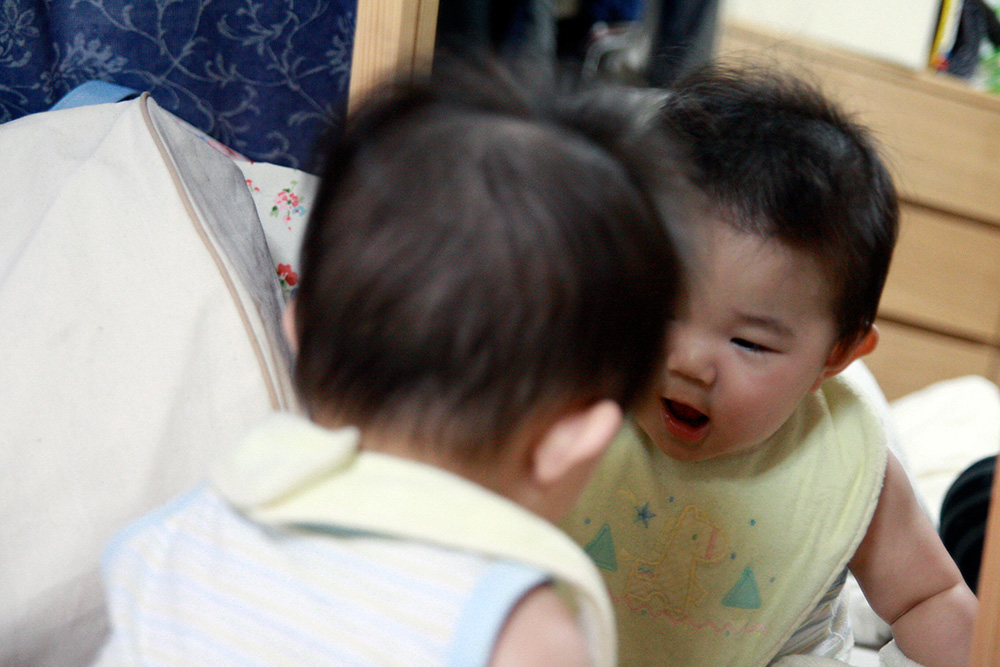
Chibi is an adjective. So naturally, you can use it to describe things as small.
For example:
"Hey, puppy. You’re chibi."
"Hey, houseplant. You’re chibi."
"Hey, CEO of my company. You’re chibi."
Whoops. Animals and objects won’t get their feelings hurt. But people are a different story.
Some people may take it as a compliment, but others (like the CEO of your company) may take offense. Chibi can be so offensive that the Koujien 広辞苑 , the most popular dictionary in Japan, defines chibi this way:
- からだの 小さいこと。そういう 人。また、 年の 幼い 者。 軽んじたり、 親しみをこめたりしていう。
- A small body, or a person who has a small body. Toddlers. Used either to make light of something/someone or as a term of affection.
Since it can go either way, it’s best to err on the side of caution. Even if you mean it as a compliment, it may not be taken that way.
Still not convinced? Consider this. The NHK Broadcast Glossary is the handbook for what is and isn’t okay for Japan’s largest public television station. In 1983, "chibi" was added as a word they couldn’t say on the air. They weren’t even allowed to use the innocuous, cutesy version, "chibikko." Today, the word chibi is still categorized as a discriminatory term by the NHK.
How to Use Chibi
All that said, chibi’s connotation can change depending on how you say it, what you combine it with, and who you say it to. To make sure you stay on the nice side of chibi (and don’t alienate all your Japanese friends) we’ve categorized all the words and phrases for your reference.
Nice Words & Phrases
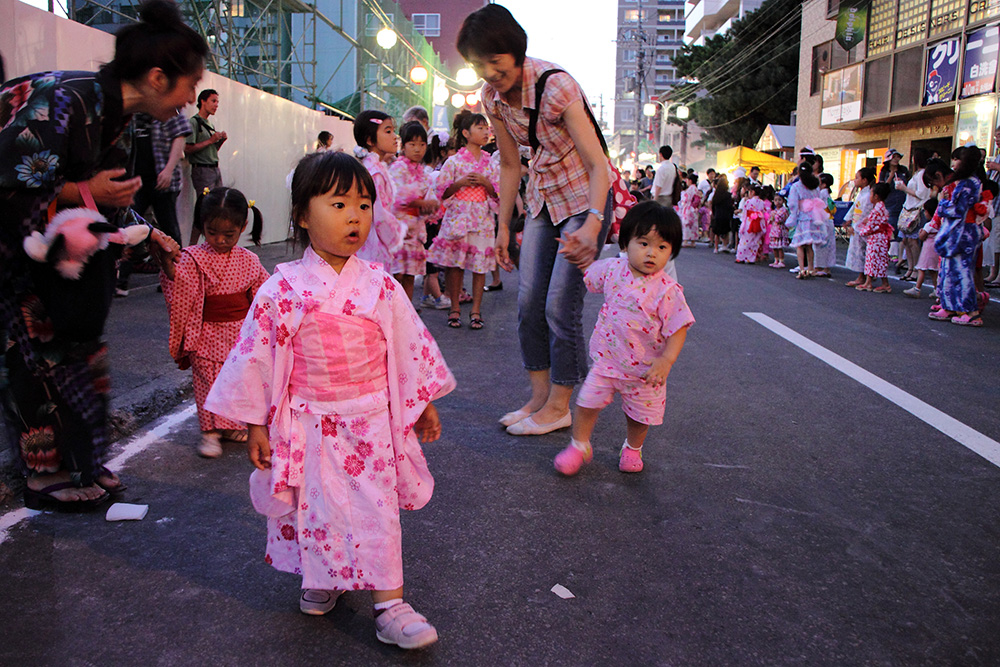
1. Calling children chibi
- うちのチビも、 同じ 玩具 持ってるよ。
- Our kid has the same toy.
Usually you would only call your own children chibi, but some people use it for other people’s kids too. In that case, it’s a little nicer to say chibi-chan, ochibi-chan, chibi-san, or ochibi-san instead of just chibi. If you want to use one of these for your own child, that's fine too.
For a group of children, you can add "tachi" to chibi like this: chibitachi チビ 達.
2. Chibi + noun
- chibikko チビっ 子: a cute, little toddler
- chibi-onigiri チビおにぎり: a cute, little rice ball
- chibi-neko チビ 猫: a cute, little kitty
- chibi-doragon チビドラゴン: a cute, little dragon
- chibi-kyara チビキャラ: a cute, little anime/manga character
These usages are generally positive and okay to use because toddlers are too young to know they’re being called chibi, and the rest don’t have feelings at all.
3. Cute Chibi Slang
- chibikkoi ちびっこい: a cute, little person, animal, or thing.
This is a slang-ier version of chibi. Slang of slang. Chibikkoi is an adjective with a meaning basically the same as chibi. But chibikkoi doesn’t feel as negative. So it’s a tad safer than chibi.
You can use chibikkoi to describe things like aka-chan no chibikkoi ashi 赤ちゃんのちびっこい 足, which means "a baby’s tiny foot."
Mean Words & Phrases
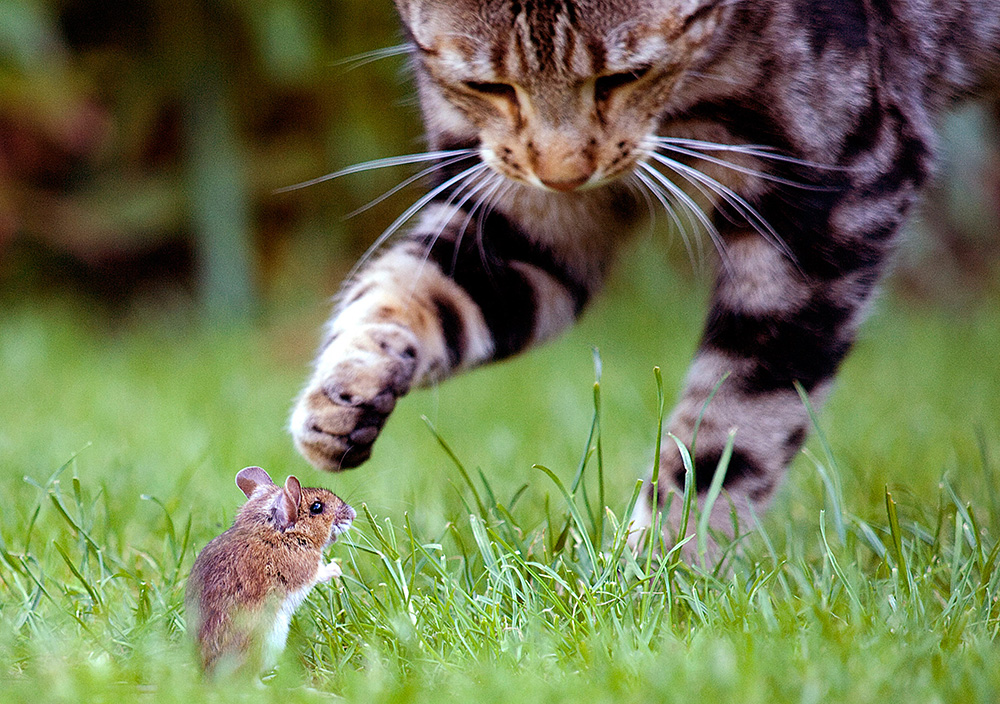
1. Pipsqueak, runt, etc.
- うっさい。 黙れ、チビ!
- Shut up, you noisy pipsqueak!
Whoa. That was just uncalled for. Why'd you fly off the handle like that? You’re such a jerk sometimes.
2. Chibi + noun
- chibi-otoko チビ 男: a short man
- chibi-onna チビ 女: a short woman
- chibi-oyaji チビオヤジ: a short old man
- chibi-buta チビ 豚: a short pig (or a small, fat person)
Wow. Combining chibi with nouns? That is low. Even for you.
Ambiguous Words & Phrases
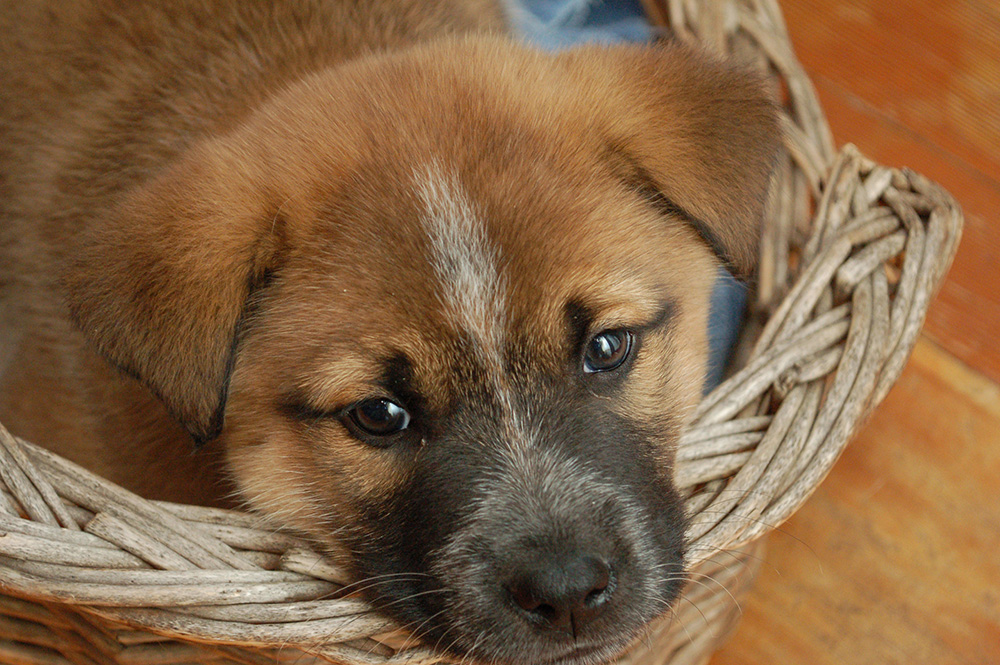
-
chibi mama ちびママ: Translated literally this word is "little mama." But it actually refers to mothers raising young children, from infants through 2nd grade. You know, the cute years.
-
chibi gyaru kei ちびギャル 系: A gyaru (gal) fashion style for little girls. Kids wearing these kinds of clothes are called "chibi gyaru."
-
chibi men kei ちびメン 系: A men’s fashion style known as "Men’s Egg" or "gyaruo." It’s a fashion style for little boys. Kids wearing these kinds of clothes are called "chibi men."
-
chibi otsu ちびおつ: This is a slang phrase born on the internet. It carries the sentiment, "Don’t be sad that you’re short" or "Too bad you’re short." The "otsu" in this phrase is a shortened form of otsukare お 疲れ.
-
chibi-ju ちびジュ: This is a fan term for male idols, particularly Johnnys. Johnny & Associates, Inc. is a talent agency that promotes groups of male idols. Young idols not yet in a specific group are called Johnnys Jr. This name has splintered into other chibi-type names like "Little Jr.," "Chibikko Jr.," "Chibi Jr.," or "Chibi-ju."
-
chobi ちょび: Sometimes chibi is changed to chobi. Why? Because it’s slang. For example, a small Chaplin-esque mustache is called chobi-hige ちょび 髭 (Hige is Japanese for mustache, beard, and other type hairs, btw). You can’t call people or animals "chobi" though. The usage is limited to amounts. Like a small amount of hair in a mustache.
How to Draw Chibi

We wanted to give you guys a special treat. Aya the Tofugu Artist is going to close out the article with a quick chibi tutorial. She’s pretty great at drawing just about anything, and that includes chibis. Follow Aya’s step-by-step instructions and you’ll be drawing chibi in no time.
1. Draw two circles

The first step is two draw two circles, one on top of the other. Make sure they're roughly the same size. They don't have to be pink though.
We're off to a good start. See, not so hard.
2. Draw the head and body

Next draw the head and body. Use the circles as guides.
The legs will help your chibi walk to the post office. The hands will help them eat sandwiches.
3. Add a face!
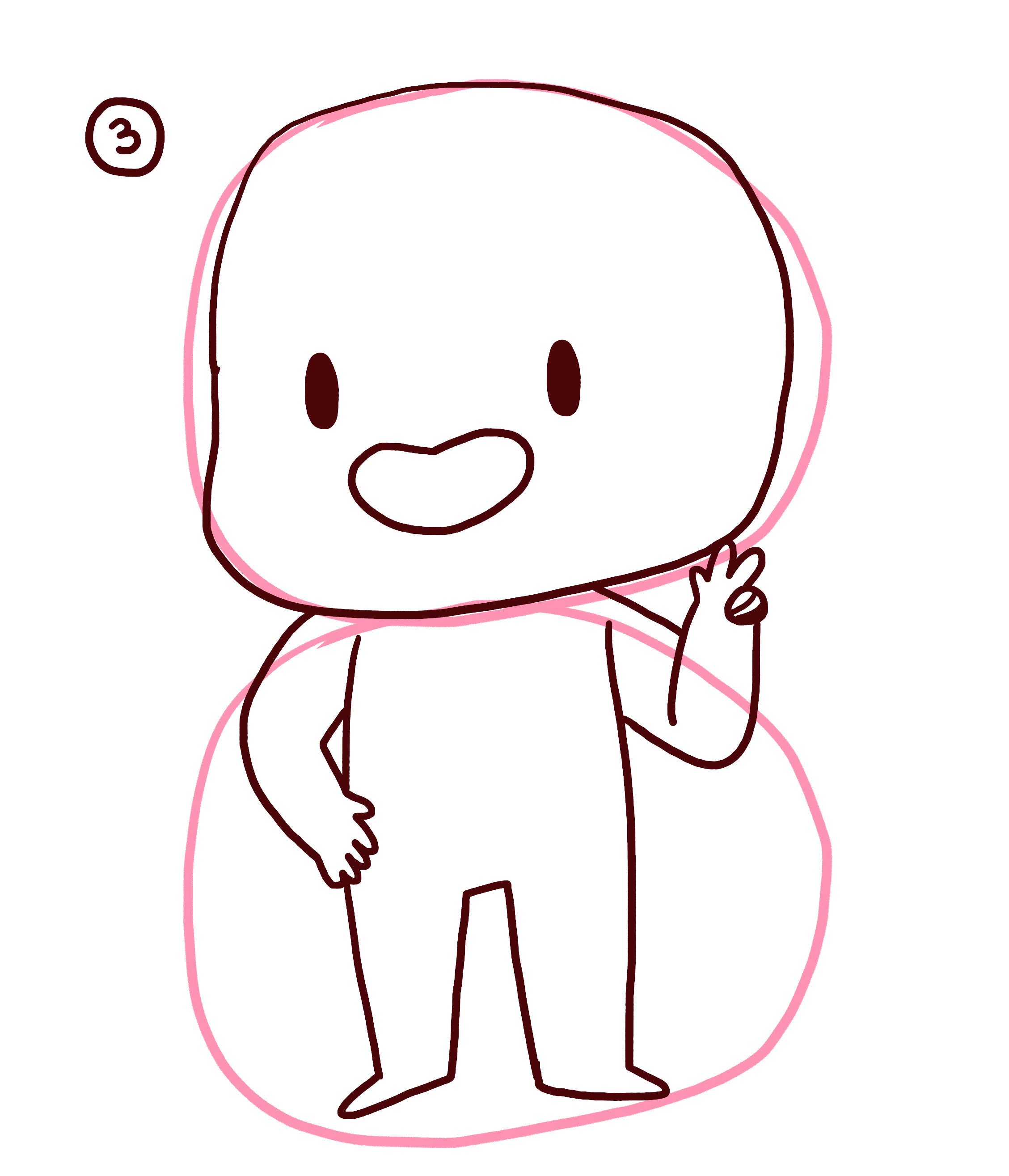
Add a face so your chibi can see things and talk.
4. Don't forget the hair
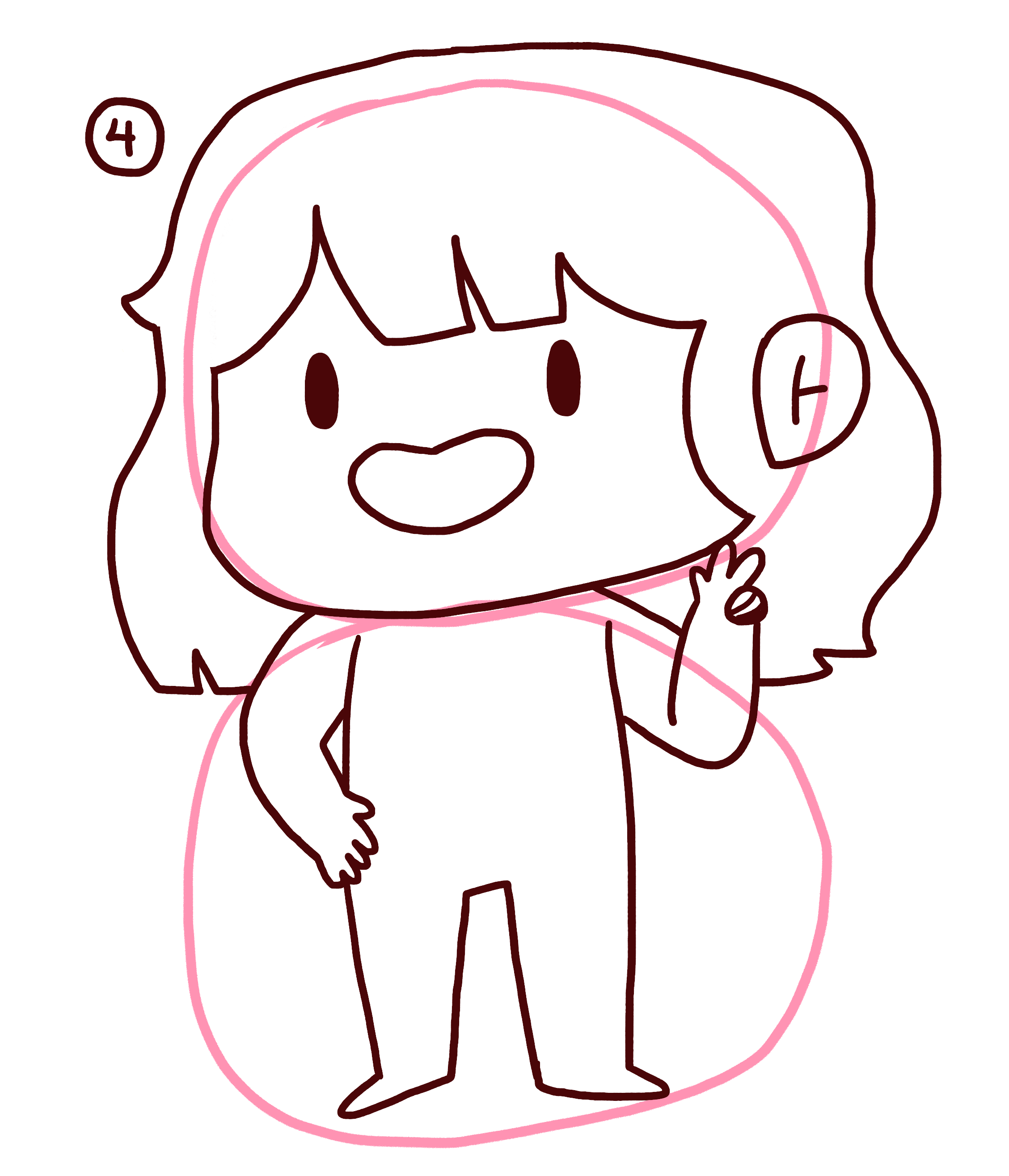
Your chibi needs hair so its head doesn't get cold. Unless you're drawing a super deformed Captain Picard. But do that later. Express yourself in the next drawing. Right now it's time to conform.
5. Add some clothes to your chibi character
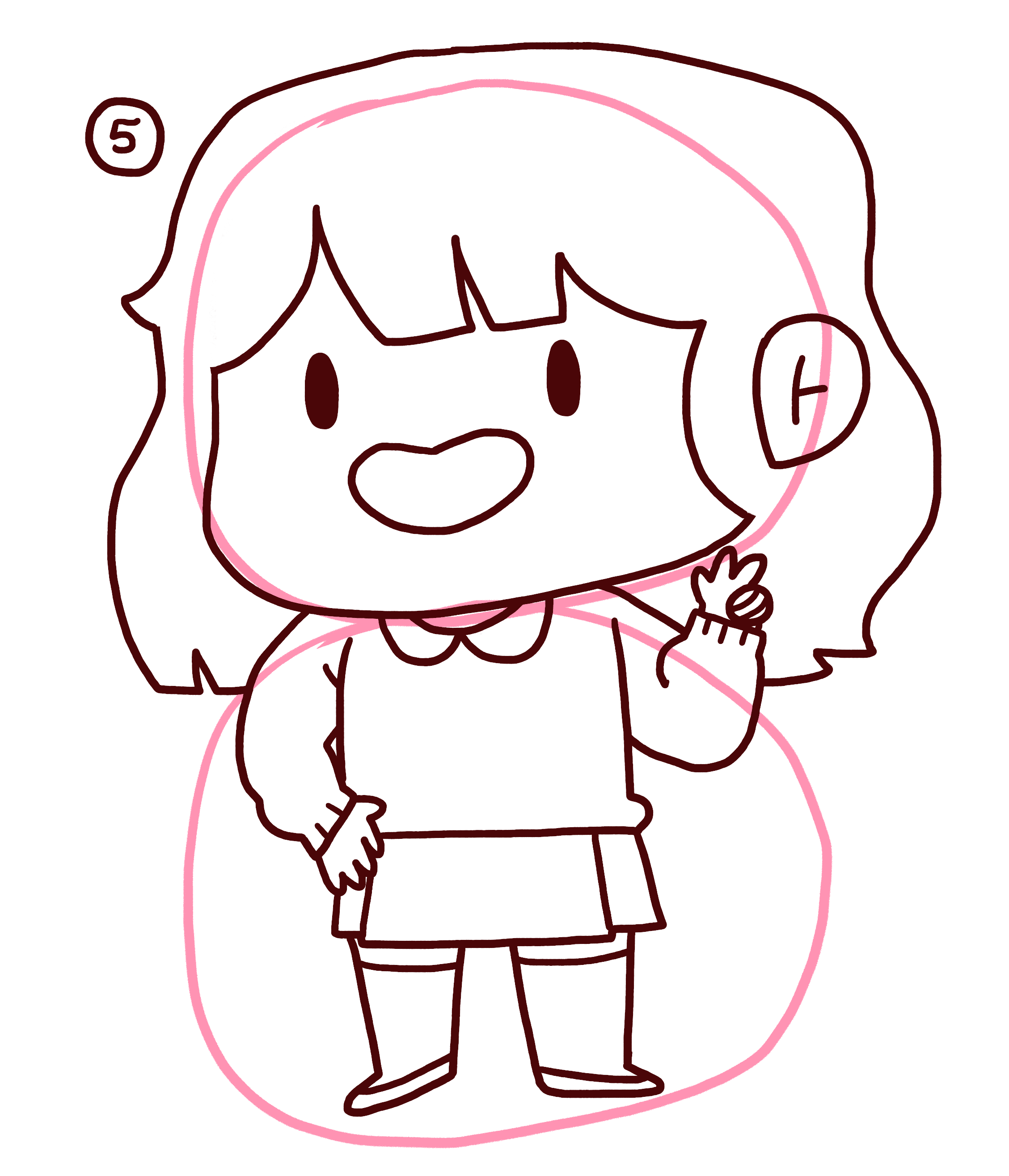
Don't let your chibi character run around naked. Put some clothes on your drawing.
6. Color it in!
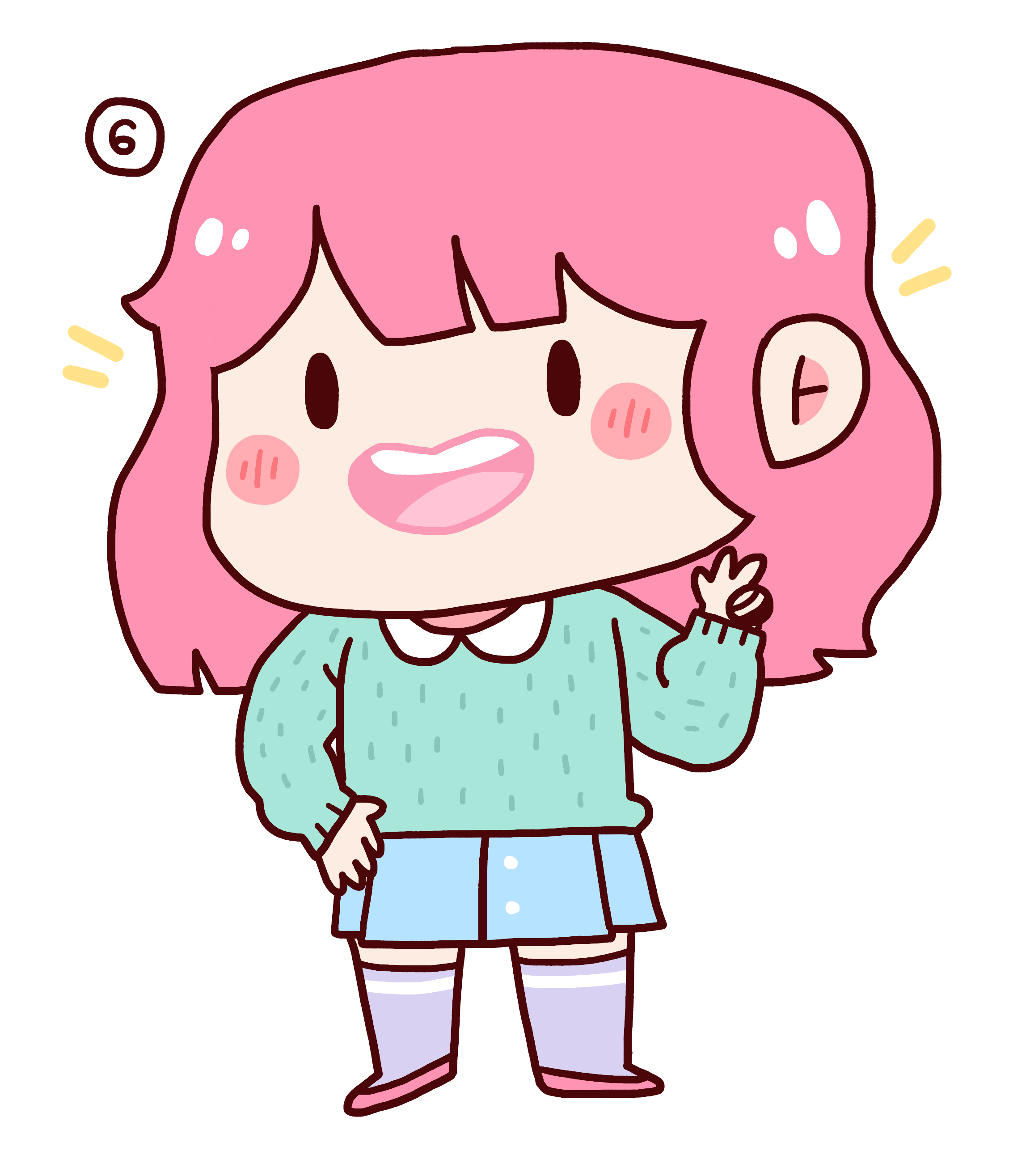
Finally, give your chibi life! Add color, which gives the drawing sentience and a soul. Now your chibi will jump off the paper at night and eat things out of your fridge.
And you’re done! Once you've finished your drawing, send us a pic on Facebook and Twitter, along with something neat you learned from this article. We’ll repost, promise!
Now go out and live your super deformed life. Appreciate the little things. Just don’t call them chibi if they’re a human being you care about.
-
A type of traditional Japanese sandal made of wood. ↩
